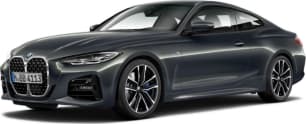A performance car should excite the senses, but the RC-F leans on one a little harder than the rest… hearing.
With the addition of launch control in last year’s update the big V8 will reliably slingshot you from 0-100km/h in just 4.5sec, which is no mucking around quick. But it’s the combination of raucous induction noise, furious mechanical roar, and bellowing titanium exhaust that add extra drama to the experience.
Fact is though, while maximum torque of 530Nm is not to be sneezed at, that number is only available from 4800-5600rpm. Although the RCF starts to get into its stride at about 3000rpm, the twin-turbo BMW M2 CS smashes it for mid-range punch with its 550Nm on tap from just 2350rpm.
So, in everyday, even mildly enthusiastic driving, the RC F sounds amazing, and don’t get me wrong, this is a proper performance car, but it doesn’t have the low-down, kick-in-the-pants grunt of its turbocharged six and eight cylinder competitors.
Linear power delivery, and the crisp throttle response only a naturally aspirated engine can deliver go some way to evening things up, however, and there are multiple systems to help tune the drive experience to your exact preference.
‘Drive Mode Select’ offers five settings (Eco, Normal, Sport S, Sport S+, and Custom).
Eco lowers engine output, dampens the throttle, and dulls the air-con in the name of fuel efficiency and reduced emissions. But you’re not buying this car to save the planet, so don’t touch that button, Sport S is the sweet spot (and save Sport S+ for track days).
Quick gearshifts from the eight-speed auto (particularly using the wheel-mounted paddles), that rapid throttle response, and nice steering feel work seamlessly together to deliver a satisfying backroad experience. Sport S holds gears longer on the way up the ratios, and is quicker to shift on the way back down.
In a more civilised mode, with eight gears to play with, freeway cruising is relaxed, especially given the top two ratios are overdriven.
The ‘Adaptive Variable Suspension’ offers Normal and Sport S modes, and here normal is the go. The basic set-up is double wishbone front, multi-link rear, and Lexus says the SACHS-developed AVS shocks can adjust damping force across a range of 30 levels. But even in the default Normal setting the ride is firm.
According to Lexus, the standard Michelin Pilot Sport 4S tyres (255/35 fr / 275/35 rr) have been tailored specifically to the RC F and they grip hard, keeping the 1715kg coupe planted in quick corners. But their narrow profile no doubt contributes to the car’s less than limo-like feel around town.
Then the ‘Vehicle Dynamic Integrated Management’ system fine tunes the car’s stability control in Sport S+ and Expert modes. Expert only happens when you’re in Sport S+ and turn the stability control off. So again, best to go full racer at the circuit, and we didn’t explore VDIM this time around.
The electrically-assisted steering is not only accurate (the strength of the steering rack bushing has been increased by 150 per cent to boost response), but the wheel itself feels great, and the huge (380mm) Brembo carbon ceramic brakes are mega (working well from cold unlike some other carbon set-ups).
Under the heading of notable mentions, the digital instrument cluster is inspired by the V10-powered Lexus LFA supercar, switching between a blue economy indicator ring in Eco mode, a standard tachometer and digital speedometer in Normal, a white and red cluster in Sport S, and orange in SPORT S+ (with three-stage upshift indicator lights).
Plus, you can also switch between racy functions such as a lap timer and G-force display, and soft-trim knee pads on the sides of the front centre console improve comfort and seating stability if you’re having a crack.

